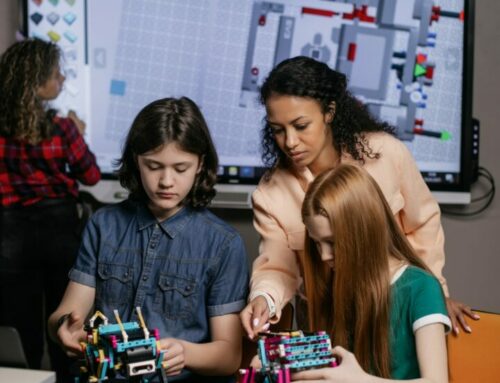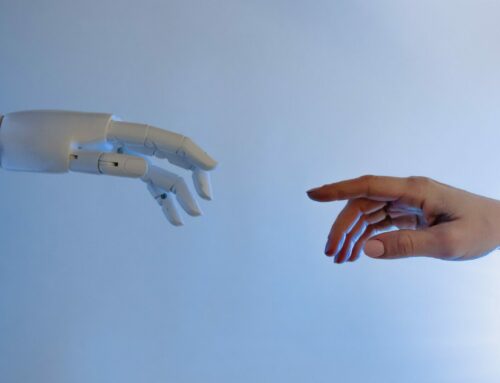Transforming learning through student research
Patrick Blessinger
St. John’s University (NYC) and International HETL Association
The demand for higher education has grown considerably in recent decades. Over the past 20 years global higher education has grown at a rate of about 5% per year. This phenomenon, together with the emergence of open education and the diversification of higher education, has resulted in many countries now reaching universal access status.
Given the wide-ranging set of interconnected global problems – political, economic, social and ecological – facing societies today, greater importance is now placed on higher education and lifelong learning as catalysts for change to help address these problems. Thus, higher education and lifelong learning have become major factors in shaping the global knowledge society. Because of its increasingly important role in society as a knowledge producer, higher education itself has increasingly become the subject of its own research.
For example, within schools of education at many universities, higher education has emerged as a unique field of inquiry for researchers as well as a specialised field of study for students. Also, there has been a proliferation of academic journals focusing on higher education like the one that I edit: The Journal of Applied Research in Higher Education.
Shifting paradigms of higher education
The word university comes from the Latin word universitas, meaning a community of scholars. The precise origins of the first universities are somewhat obscure since they evolved very slowly in the early years and detailed records where not always kept.
Many early universities began as religious schools and as gathering places for teachers and students. Among the first such gathering places of higher learning were the University of al-Qarawiyyin in Morocco and the University of Bologna in Italy.
The modern university model, as we know it today – with its organisational structure of disciplines-faculties, focus on freedom of inquiry, delineation between undergraduate and graduate students, and required courses, examinations and academic degrees – emerged from the European medieval university model with the first doctoral degree awarded about 800 years ago in Europe.
The early medieval universities focused primarily on liberal arts studies such as grammar, rhetoric, logic, maths and natural philosophy to help prepare students intellectually for professional fields such as law, theology and medicine.
Pedagogically, scholasticism, with its focus on dialectic reasoning to arrive at philosophical truths, was the prevalent teaching and learning paradigm in the early centuries of the university. During the Renaissance period, humanism, with its focus on critical thinking and empirical observation, began to emerge as a ubiquitous teaching and learning paradigm.
Today, higher education is very diverse and multi-purpose with respect to institutional types – research universities, liberal arts colleges, community colleges and vocational-technical colleges – teaching and learning methods used (pedagogical pluralism), students served, programmes-curricula offered and modes of delivery.
As with any system, natural or social, higher education continues to evolve and modernise itself to better respond to contemporary educational needs. With respect to universities specifically, the predominant model today is the Humboldtian model which emphasises the integration of research, teaching and learning.
The nature of research
Broadly defined, research is the process of systematic inquiry. The word research comes from the French word recherché, meaning, to seek or to search for answers to questions.
In academic research, this implies the asking of a research question and then collecting and analysing data and evidence to help answer that question. The nature of the research question posed and the type of data analysed therefore influences the research methodology used.
More narrowly defined, research is a systemic process to investigate the nature of a particular phenomenon which exists in the natural world or the social world or the personal world or any intersections of those worlds. Because knowledge domains are not mutually exclusive, the domains often overlap. New knowledge often emerges from the domain-spanning intersection of ideas, say between art and science.
Transforming learning through student research
The different types of knowledge domains (science, humanities, arts) emerge from different worlds (natural, social, personal) and, consequently, involve different modes of inquiry (scientific, humanistic, artistic).
Each domain-discipline has developed its own paradigms, models and methodologies for conducting research to address the epistemological (knowledge), ontological (reality) and axiological (values) objectives unique to it.
Principles and concepts from one domain or discipline can be integrated with other domains or disciplines. All domains have the potential to inform and benefit other domains. For example, for scientists and engineers, the humanities and arts have the potential to enhance creative communication and cultural understanding, whereas for humanists and artists, science has the potential to enhance problem solving and critical thinking.
Educational research methods
Before the development of formal educational research methods in the 20th century, educational philosophy was greatly relied on to guide the development of theories and assumptions about teaching and learning.
However, with the emergence of the social sciences and with the refinement of educational research methods, together with advances in brain research and learning science, educators now have a broader set of tools and knowledge bases by which to determine the soundness of educational philosophies, teaching methods and learning theories. Given the huge potential for research of all types to enhance learning outcomes, higher education can benefit from integrating student research activities into curricula at all levels across all domains.
Research occurs along a wide spectrum, from scientific research to humanistic research to art-based research. This spectrum of research activities allows for great flexibility in integrating research into a variety of courses. By using both critical thinking and creative thinking, students are better able to evaluate issues and problems from a more comprehensive set of perspectives.
Inquiry is a natural human activity that emerges from the basic human drive to make meaning and sense of life and the universe we live in. Hence, when students at all grade levels engage in varied research activities as part of their educational experience, it provides a natural vehicle for transforming learning.
Patrick Blessinger is an adjunct associate professor of education at St John’s University in New York City, United States, and chief research scientist for the International Higher Education Teaching and Learning Association. He is senior editor of the Journal of Applied Research in Higher Education.
Note: this article also appears in the University World News blog at http://www.universityworldnews.com/article.php?story=20170530085248669
Suggested Citation:
Blessinger, P. (2017). Transforming learning through student research, Higher Education Tomorrow, Volume 4, Article 5, https://www.patrickblessinger.com/strengthening-democracy-through-open-education
Or
Blessinger, P. (2017). Transforming learning through student research, University World News, http://www.universityworldnews.com/article.php?story=20170530085248669
Copyright © [2017] Patrick Blessinger
Disclaimer
Opinions expressed in this article are those of the author, and as such do not necessarily represent the position(s) of other professionals or any institution.



